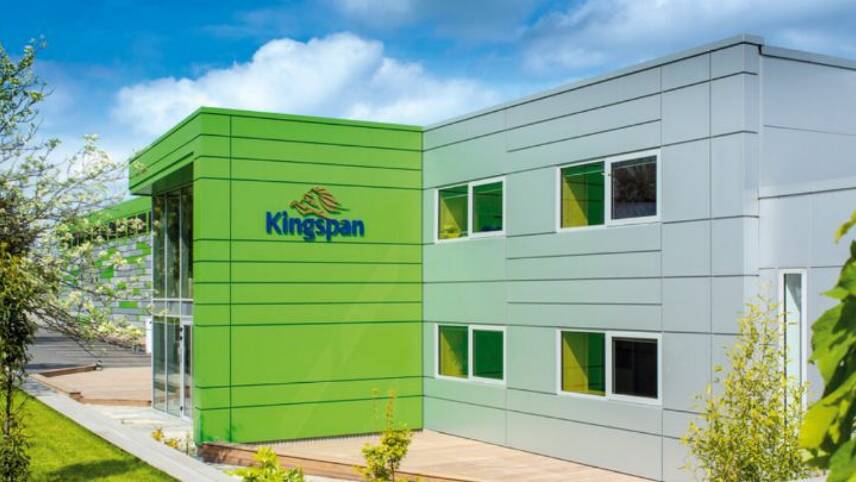Register for free and continue reading
Join our growing army of changemakers and get unlimited access to our premium content

Kingspan invested €63.5m in research and development last year.
Kingspan’s QuadCore insulated panels have been tested using comparative Lifecycle Assessment Data (LCA) data to the EN15804-A2 standard. Results suggest that the new insulated panel technology can demonstrate a 41% reduction in embodied carbon across the production stage when compared to existing 100mm-thick panels from Kingspan.
The 41% reduction is achieved through raw material changes, but Kingspan notes that the overall reduction in embodied emissions is 17% when accounting for product, construction, use and end-of-life stages.
The company hopes to achieve further reductions in embodied carbon up to 2030.
Kingspan’s head of innovation Mike Stenson said: “As a business, we are committed to developing high-performing, energy efficient, building envelope solutions that help minimise the carbon footprint of buildings over the whole life cycle. Creating products with reduced embodied carbon and enhanced potential for circularity is key to achieving this.
“QuadCore is already one of the highest performing insulation technologies in terms of thermal efficiency (underpinned by a 25-year thermal warranty) which could enable higher energy and carbon savings through the operational life of the building. This is the first step on our journey to reducing the embodied carbon of our products and we anticipate some major milestones by 2030 to drive that down even further.”
Embodied carbon
The WorldGBC’s ‘Bringing embodied carbon upfront’ report outlines the sector’s vision for how buildings and infrastructure can reduce embodied carbon emissions by 40% by 2030, to assist with the ambition of reaching 100% net-zero emissions buildings by 2050.
The report notes that operational emissions (from energy used to heat, cool and light buildings) account for 28% of the built environment sector’s 39% contribution to global greenhouse gas emissions. The remaining 11% derives from embodied carbon emissions found in the material and construction processes across a building’s entire lifecycle.
However, a report from the World Business Council for Sustainable Development (WBCSD), supported by professional services firm, Arup, warns that less than 1% of building projects currently account for lifecycle carbon impacts.
The report found that as much as 50% of lifecycle carbon emissions from buildings come from embodied sources such as the manufacturing of materials and construction processes. As few as six materials, including concrete and steel, account for 70% of the construction-related embodied carbon, the report adds.
Net-zero approach
Kingspan has notably pledged to introduce its first internal carbon charge this year, with the price set at €70 per tonne of CO2e.
Kingspan’s headline targets on emissions are to reduce absolute operational emissions by 90% by 2030, against a 2030 baseline, and then to offset the remainder to achieve net-zero.
There is also a commitment from the firm to reduce Scope 3 (indirect) emissions by 42% within the same timeframe. Primary suppliers have been asked to halve their emissions intensity within the decade to help deliver this aim. Those targets were verified in line with the Science-Based Targets initiative’s (SBTi) 1.5C pathway in August 2021.
According to the company’s most recent sustainability report, Kingspan’s absolute operational emissions were down just 4.3% in 2021, from 2020 levels. Challenges to delivering a greater level of decarbonisation included the growth of the business – it had 166 manufacturing sites in 2020 and added more than 30 new locations to its portfolio in 2021. Revenue growth was also up by 42% year-on-year as lockdown restrictions began to ease in many geographies.


Please login or Register to leave a comment.